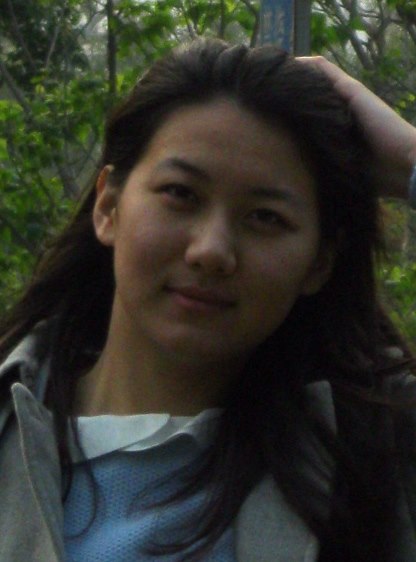|
|
Abstracts
| Title:
Species composition and cell density of diatoms in the Changjiang River Estuary and its adjacent waters in the spring of 2013
|
|
|

|
Ms. Yu-Han LIU
School of Life Sciences
Xiamen University
Xiamen 361102, China
Abstract
Diatom is among the most important phytoplankton species in the marine ecosystem, especially for its abuandance and species in the offshore waters. In this study, 56 samples were collected during 2 cruises in April and May, 2013 in the Changjiang River Estuary and its adjacent waters (28°05’N-31°30’N, 121°45’E-123°50’E). In total 79 diatom species (including varieties, forms) belonging to 33 genera were identified. Most of them were widely-distributed species (48.5%) such as Skeletonema costatum, Coscinodiscus radiates, Chaetoceros affinis and Melosira sulcata, followed by the warm water species (37.9%) such as Coscinodiscus decrescens, Coscinodiscus marginato-lineatus, Rhizosolenia cylindrus and Chaetoceros rostratus, and temperate species (13.6%) such as Amphora coffeaeformis, Navicula parva and Coscinodiscus divisu. The diatom average cell density was 5.2*103 cells/L in the surface waters, 2.7*104 cells/L in the middle layer waters, and 2.7*103cells/L in the bottom layer waters, the maximum cell density is 1.1*105 cells/L at the sample site ZA5. Diatom cell density was relatively low during the period of the dinoflagellate bloom, and the dominant diatom species in the bloom period were Pseudo-nitzschia sp. in the late April and Melosira sulcata in May.
|
|
| Title:
Morphological response of Skeletonama dohrnii to varying nitrogen, phosphorus, silicon concentration in culture media
|
|
|

|
Yunchen YANG
School of Life Sciences
Xiamen University, Xiamen, 361102, China
Abstract
Skeletonema is a kind of eurythermal and euryhalinous planktonic diatom which distribute widely at the offshore area around the world. It is also one of the common red tide causative species. It has been reported that the change of nutrients in sea waters could affect the growth of diatom significantly, while current researches usually pay attention to the growth and physiological prosperities of Skeletonema. The changes on morphologies, especially the change of chain length and cell size, have not caused common attention. In the present paper, we studied on the varying characteristics of morphological data of S. dohrnii (including the number of cells in one chain, chain length, cell height and cell width) with the changes of eutrophication of sea water by setting different gradients of nutrient concentration. It was found that varying nutrient concentrations will indeed induce the changes of morphologies of S. dohrnii, especially the cell number in one chain, which could decrease averagely from 3.34 to 2.96 cell/chain, with increasing of concentration of NO3- from 300 to 549µmol·l-1, and increase from 2.79 to 3.28 cell/chain with the increasing of concentration of H2PO4- from 11.2 to 22.4µmol·l-1, and a normal concentration of NO3-. The cell number will also increase from 3.28 to 3.34 cell/chain with increasing concentration of SiO32- from 53 to 106µmol·l-1 along with normal concentrations of NO3- and H2PO4-.
|
|
| Title:
Geographical distribution of a marine diatom Cyclotella stylorum Brightwell in the South China Sea based on sediment samples
|
|
|

|
Rui WU
Hainan Academy of Ocean and Fisheries Sciences, Haikou 570203, China;
School of Life Sciences, Xiamen University, Xiamen 361102, China
Abstract
The geographical distribution of a marine diatom Cyclotella stylorum in the South China Sea was studied with 62 semimetal samples collected in the uppermost 1 cm of sediment with grabs or box corers in two cruises in 2001 and 2007. The sampling stations were located between 03°56.61’-20°59.37’N, 109°46.04’-116°46.70’ E. The water depths ranged from 62 to 4238 m. The results showed that the diatom abundance was high, with maximum, minimum, and average values of 2.2x105, 3.9x104, and 1.3x105 valve/g, respectively. C. stylorum was one of the ten most dominant species with a peak value of 73.1 % at station SA12-32, and the average was 5.32 %. It is mainly occurred in the northwestern continental shelf, taking 42%-73.1% of the total in the local area. In other stations of the investigated area, it is relatively fewer, accounting for 0-7.1% in the neritic area of the northern continental shelf, 0.4%-11.8% on the northern Sunda continental shelf, even fewer in Xisha Island region, and absent in some stations, while it reaches 10.2% in only one station, and 0.2%-7.1% in the Nansha basins. C. stylorum is nearly undetectable in the northern Kalimantan Island shelf area. It is indicated that these diatom distribution zones are closely related to topography, hydrodynamics, temperature, nutrients, especially the salinity. C.stylorum can also be used to identify the influence of the coastal currents in SCS. These results would help better understanding of the relationship between the diatom distribution and the oceanographic changes, and the reconstructions of the SCS environments in the past.
(Nos.40676026, 41076079).
|
|
|

